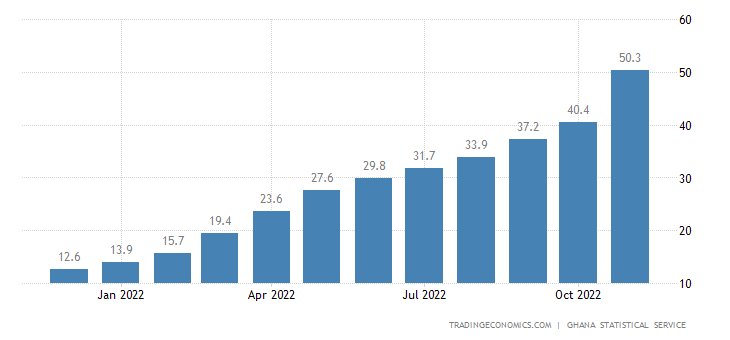Ghana’s inflation for November 2022 surged to 50.3% from 40.3% the previous month, the Ghana Statistical Service (GSS) said on Wednesday.
That’s the fastest pace since at least January 2004 and the 14th straight month the inflation rate has surpassed the 10% ceiling of the central bank’s target range.
The rise in inflation comes a day after Ghana secured a staff-level agreement with the International Monetary Fund (IMF) for a $3 billion support package over a three-year period.

Government Statistician Samuel Kobina Annim noted that the inflation rate for November was mainly driven by transport and utilities.
According to the figures, food inflation hit 55.3%, from October’s rate of 43.7%.
Non-food inflation also shot up by 7.2% to 46.5% in November 2022.
Inflation for locally produced items also stood at 48.3%, whilst inflation for imported items was 55.1% in November 2022.
Five groups – Housing, water, gas, electricity and other (79.1%); Furnishings, household equipment (65.7%); Transport (63.1%); Personal care, social protection and miscellaneous services (56.3%) and Food and Non-alcoholic beverages (55.3%) registered inflation rates higher than the national average.
For food, eight sub-classes recorded inflation rates higher than the national average.
They include water (93.2%); milk, other dairy products and eggs (75.4%); fruit and vegetable juices (73.1%); sugar and confectionary and desserts (70.0%).
Regional breakdown
The Eastern Region recorded the highest inflation rate of 63.3 for the regions%.
It was followed by the Greater Accra Region, with an inflation rate of 61.6% and the Bono Region, with a rate of 53.6%.
The region with the least inflation rate is the Upper West, with a rate of 35.6%.



